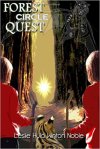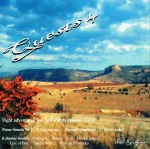
Is there anyone who can give me a straightforward method, other than trial and error, for the following kind of problem set in today’s Grade 5 maths homework (and, no, they aren’t working with equations yet):-
“Mia goes to the supermarket and spends R20 on a gift for her mother. She then spends half of what she has left on a gift for her father. She buys a gift for R15-00 for her brother, and has R10-00 left over. How much did she start off with?”
I worked out the answer as being:
Mother 20-00 Given
Father 25-00 (1/2 of 70* minus 20)
Brother 15-00 Given
Left 10-00 Given
Start 70-00*
The only way I could do it was to work it back from guesstimates of the total cash*, adjusting up or down as necessary until it added up.

















There’s no adjustment or guessing and it’s pretty simple . . .
You know she ended up with 10
You know she spent 15 on the brother.
That’s 25 and you know that’s the same amount as she spent on her father, so she had 50 after buying the 20 gift for her mother.
Hence, 70 is right. The trick (if you can call it a trick) is realizing that the last two numbers, 10 and 15, are half of what she had after buying the gift for her mother.
People who grew up with traditional math try to work with equations instead of reading the problem for clues.
Now, I agree it sounds as if it’s too complicated for kids . . . but, teach a kid to reason out the solution to a problem, and they learn more than just adding and subtracting numbers.
. . . or, maybe not.
LikeLiked by 2 people
I’m still not home and dry. I know the solution, having worked it out based on narrowing estimates. What I am asking is, given these numbers, what would be the simple step-by-step arithmetical way of arriving at the answer, and on what logic?
LikeLike
I just explained it, but let me rephrase it.
The narrative tells you that the 10 you have left and the 15 you spent amount to half of what you had before you bought the gift for the father. (no guessing it estimating involved; you are told that outright)
That’s 25 and hence, there gift for the father was 25. (no guess or estimating involved)
That means that you had 50 after you bought the gift for the mother. (again, not a guess or iterative process involved)
You spent 20 on the mother. Fact
50 plus 20 is 70.
At no point did you need to guess anything or do any iterations of solve any complicated equations.
However, the solution’s key is realizing your’re told that the 10 + 15 is half of what you had after buying the gift for the mother.
You’re looking at it as a math problem. It is that, but it’s also a logic problem. Take away the numbers and it’s the same. All it requires is addition.
Here: you have an apple and you gave an apple to your brother. You and your brother together have the same number of apples that your father has. Plus, your mother has an apple. How many apples are there? Five apples.
That’s the same structure (plot) as the original problem but reworded: you gave an apple to your mother. You gave half of the remaining apples to your father. You then gave one apple to your brother. You are left with one apple. How many apples did you start up with.
LikeLiked by 1 person
Sorry, I had changed the wording but not the answer; it’s five apples.
LikeLike
Please fix so it does not confuse people (or think I can’t add).
LikeLike
Nick of time. I was about to go off somewhere and shoot myself after striving vainly to get six.
LikeLike
Thank you! That’s evidence for a level of trust in what I write that far exceeds justification. I hope none of your other guests have similar confidence in my explanation and offed themselves in desperation between the time I made the mistake and the time I identified it as such.
LikeLike
Ah, that’s more like it. I think I’ll get my head around this when it stops spinning.
LikeLike
In mathematical terms, this is what the problem asks you to solve (once you recognize what it says):
20 + 2(10 + 15) = ?
There is no guessing involved and you don’t have to iterate the answers; it’s a simple problem expressed in a way that gets you to use your reasoning to recognize the equation it represents.
I believe (but don’t know since I don’t have children) the idea is not just to teach manipulating numbers, but to have kids think about the problem and reason out what is essentially a puzzle.
It’s an approach that gets adults used to traditional math into trouble because they are looking at it as being more complicated than it is and they write an equation to solve what they believe are two unknowns (why they end up iterating) when, in fact, there are no unknowns.
LikeLike
I’m guessing you started breaking down the narrative into an equation instead of analyzing the whole, hence the iterative process (which you still won’t let go).
As an editor, I don’t think you begin by ignoring the plot and just looking at the individual scenes. Also, as the means of understanding the plot, you pay attention to the details presented in each scene and try to place them in the context of the overall plot (because you know there should be a plot). What you don’t do is look at individual scenes as independent of each other or the overall plot.
LikeLike
*urk*
LikeLike
OK, so I’m not an editor and don’t know what editors do. Perhaps I should have said “writer”.
But then, I also can’t really call myself that these days.
Tell you what; forget the analogy; I only tried it because I wasn’t sure if my explanation of the “solution” made sense.
But, does my explanation make sense? Do you still think you need to iterate backwards to get an answer?
Also, if you would be so kind, could you change the “six” to a “five”. I typed that on the phone and initially, I had the mother with two apples.
LikeLike
Search me
LikeLiked by 1 person
You are searched and found wanting . . .
LikeLiked by 2 people
Was it algebra?
LikeLike
No, supposed to be simple what used to be known as ‘arithmetic’ but is now lumped in with ‘maths’.
LikeLiked by 1 person
Ah!
LikeLike
Somewhere high up the food chain of educationalists I suspect there is an answer, along the lines of “old-fashioned methods never allowed number sense to develop”. And, we have to counter the rush to calculators. What you demonstrate in old-fashioned way is that you have a number sense – eg 50 would be too small, 100 ? too large, so you guessimate in between. You might google to find a method called “iterative approximation”. Another question – who has number sense in your house now? Everyone or just granddad?
LikeLike
At least I could do it — against heavy disagreement from R and Much Better Half both whose answers I had to demonstrate to them as being wrong, with them fighting to the last ditch. Thing is, a clever mate of R arrived at the same wrong answer by following the same faulty chain of interpretation of the question.
LikeLike